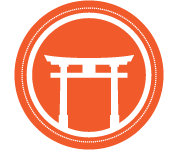What is Aikido?
Inryoku Volume 6 Issue 7
By Josh Paul, AOSB Head Instructor
Introduction
This month’s issue is a throwback to my 2004 shodan essay What is Aikido?
For black belt promotions, the Aikido World Alliance requires written essays. For shodan, there are two topics: What is Aikido? and What is Shugyo? These essays should be personal reflections on how aikido has changed, informed, and enriched your life.
I tested for shodan in August 2004 at the Aikido Association of America’s East Region Camp. Andrew Sato Shihan administered the test. Yasuo Kabayashi Shihan presided. There was third person on the test committee, but the video quality and my memory are too poor to figure out who it is.
I was extremely nervous. Just before the exam Glen Matsuda Sensei from Rockland Aikido pulled me aside and threw me a bunch of times to help me burn off the nervous energy. Afterwards he said with a smile, “Better. Not great, but better.”
With this anniversary approaching, I took a deep dive into my computer archives, and unearthed this essay. It is timestamped July 23, 2004.
I hope you will enjoy this trip down memory lane with me. Unfortunately, I do not have any pictures from the exam. Cameras were not ubiquitous in 2004. However, there is video, and AOSB members can see my entire shodan exam in the AOSB video library.
For no apparent reason, every student between the ages of 8 and 12 arrived for Saturday 9 a.m. practice like a tornado, full of nervous, bubbling energy. The mood was so pervasive, it bordered on conspiratorial. I knew class would be more like randori practice, always teetering on chaos.
The dissonance manifested itself immediately: lining up properly to start class seemed all but impossible. Everybody knew what to do, we just could not do it simultaneously, and with an awareness of one another.
This picture is from May 2006. It is the oldest aikido picture of me I can find. At least some of these kids were in the class described in the essay.
So, we practiced. Repeatedly.
I asked the class to stand and wander aimlessly about the dojo until I called for the line-up. Then, much like a safety drill, I counted how long it took us to form one, gap-free, straight line, centered with the shomen. The older students rolled their eyes, thinking “again with this exercise,” whereas the younger students enjoyed the opportunity to twirl around.
After several minutes, we achieved a properly formed line, and I opened the discussion: Why are we doing this? Why is lining up important?
We discussed the importance of maintaining dojo etiquette, and then the students began asking for my reasons. When I started the exercise, I was thinking about good etiquette, but, at this point, I wanted a more fulfilling explanation.
I thought for a moment, considering all the elements involved with beginning class in “formation.” We practice lining up, I said, because lining up is aikido.
My abstract answer received the blank, perplexed stares it deserved. I elaborated: When lining up and sitting seiza, we practice all four basic principles of aikido. Weight is clearly underside, we relax completely, maintain one point, and extend ki. We practice ki exercises and testing regularly so this made sense.
When we line up, we also practice awareness or zanshin. We have to know the position of every other student, where they are sitting, as well as their rank, to form a proper line. This, too, seemed to make sense, as awareness and focus are popular topics of discussion with this age group.
Studying, practicing, and exercising these basic principles is aikido. It is awareness of our surroundings and the people around us, as well as maintaining the four basic principles that makes aikido unique, and self-defensive. Without awareness, balance, energy, and a calm, clear mind, we are vulnerable. And, we are not only vulnerable to random acts of physical violence, but also emotional and intellectual attacks and conflicts from friends, family, co-works, and, of course, ourselves.
When I first entered the dojo, I expected to learn specific techniques to defend myself from would-be attackers. I was, and continue to be, surprised at how useless my techniques are when practiced without the basic principles to support them.
There are as many ways to explain aikido as there are aikido techniques. My idea of aikido changes frequently, sometimes even from practice to practice. But it is the pursuit and maintaining of these principles that remains constant, and it is these principles that I carry off the mat and try to apply to all aspects of my life.


